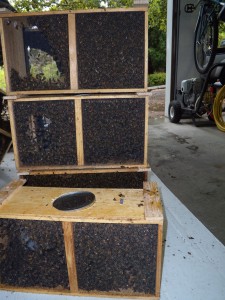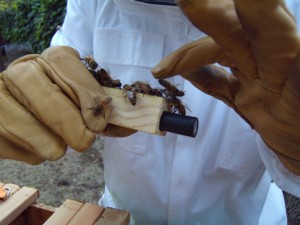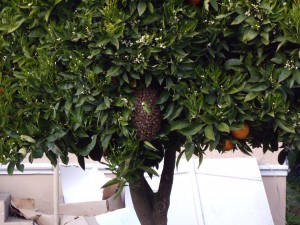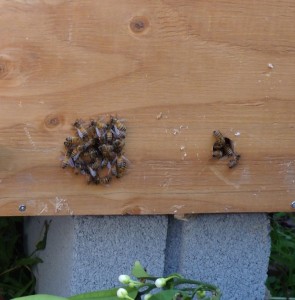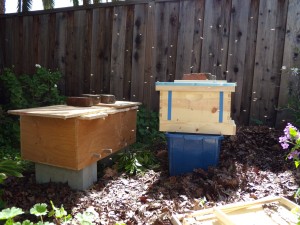It’s been over two months since we brought home our four balls of fluff. I predicted from the start that we would end up with grown hens wandering the house and an unfinished chicken coop in the garden. This has (almost) come to pass. The girls are fully feathered, can fly quite well, and are alternating their baby peeps with noises that sound distinctly like the cries of egg-laying hens. But the coop and run really are almost finished—we promise—and the girls will soon be liberated from their cramped cardboard box.
Though the coop is not quite complete, I am proud to say that we didn’t procrastinate. Rather, it turns out that building a raccoon-, possum-, skunk-, and rat-proof home for chickens is a huge job for people with no great carpentry skills to speak of. Kelly is the hero of the endeavor, and I the sous builder who scampers to procure the proper screws and hold the avian wire in place.
This project reminds me how much I dislike hard physical work. I want to like it. I take up hobbies that require it, but at the end of the day, I am much happier admiring the completed project than I ever was digging ditches, or hauling concrete chunks, or even pounding nails.
Kelly, on the other hand, finds this project pleasing (if also exhausting and overwhelming). As I write this, I can hear her pounding away on some of the finishing touches. I got special permission to leave the job site to write a long overdue blog post, and I promised to sing her praises. This is not too onerous a task for me, and she deserves it. Kelly has spent nearly every one of her days off over the past few months working on the chicken housing. She has an eye for detail and a perfectionistic streak and has refused to cut the corners that I might have been tempted to.
Braving the neighbors
This morning, we put on our Sunday best and paid a visit to our “chicken coop neighbors”. Their kitchen and bedroom windows and balcony look directly down onto the coop. We were nervous. Turns out they seem to have guessed, due to the large cage-like structure we have been banging away on for two months, that some type of livestock was moving in. Surprisingly, they were all smiles, especially when we assured them we plan to share eggs. They even suggested that their little daughter might be able to come pay the chickens a visit when the birds move into their new home.
Coop specs
The run is seven by fourteen feet and fully protected from chicken-eating creatures. Half of the roof is covered with avian wire, and the other half is covered with clear corrugated plastic for rain protection and maximum winter light. We dug a trench a foot deep around the outside and sunk the avian wire to prevent critters from digging in. We filled the trench with “fine” concrete rubble (i.e. small concrete bits, plus dirt) and arranged large concrete chunks on top.
We built a two by four foot coop with nest boxes and mounted it in one corner of the run. There are doors for us to collect eggs from the outside. We included four nest boxes (probably overkill, as we’ve read chickens can share) and a place for the birds to roost. Kelly designed two doors that open into the run: one for everyday chicken use, and another for cleaning out the coop. She also came up with several screened windows that can be opened or closed seasonally for ventilation.
The final touch is a door for us to access the run. A beekeeping friend of ours generously offered to build it, and we should install it in the next few days. Hurrah!










